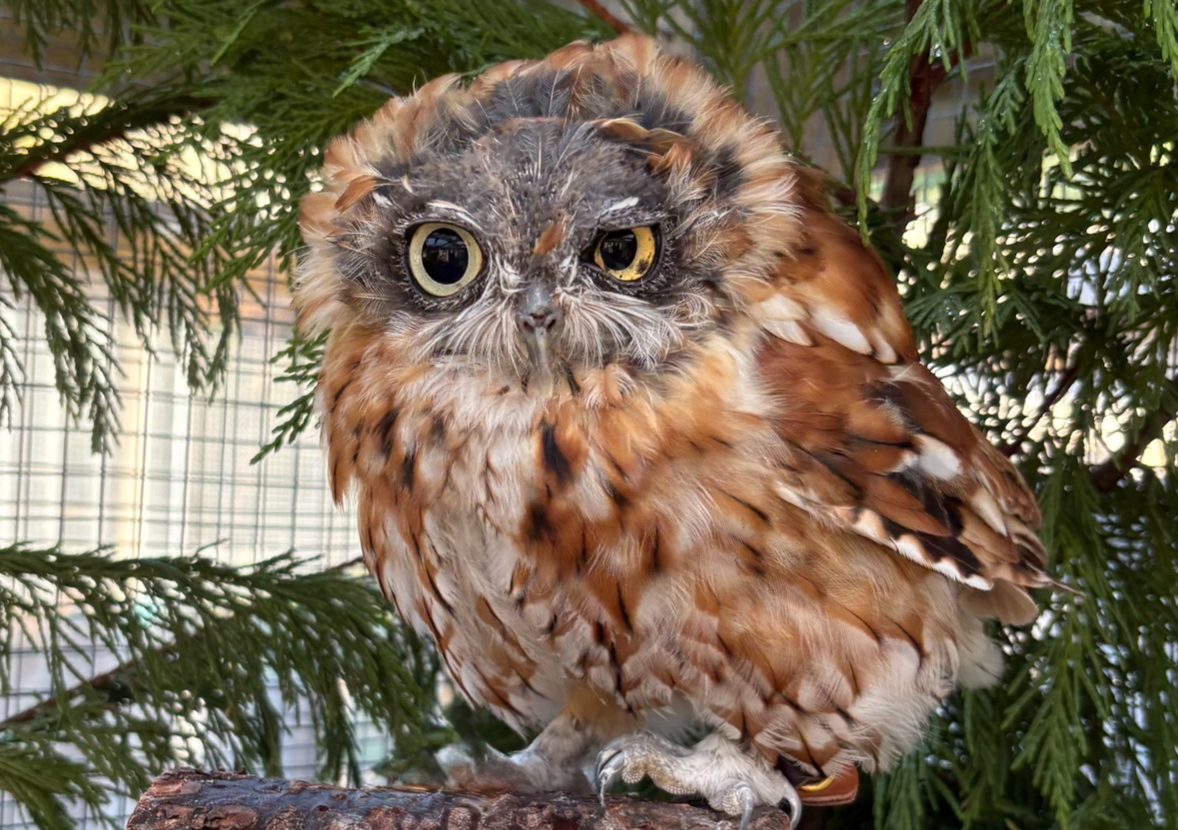Evelyn Alexander Wildlife: Molting Season Puts Feathers in Flux

At the Evelyn Alexander Wildlife Rescue Center (EAWRC), the changing of the seasons is written not just in leaves and weather, but in feathers. Late summer and early fall marks the molting season for birds across Long Island, a natural process that is both essential and uncomfortable.
“Molting is when birds replace their feathers with new ones,” explained Rose Lynch, animal care assistant at the EAWRC. “Younger birds go through something called a complete molt, which takes a lot of energy and nutrients. Older birds, like our screech owl Meep, don’t always do a full molt every year, and their bodies conserve energy differently as they age.”
One of the EAWRC’s ambassador owls, Henry the eastern screech owl, is in the thick of it. “Henry is constantly preening and bathing himself,” Lynch explains, “He’s very shiny and put together, but molting is still itchy and uncomfortable. In the wild, birds have access to running water, hunting, and flying to help relieve the stress of the process. Our ambassadors don’t, so they can get a little cooped up during this time.”
Most birds undergo either a partial or complete molt once a year, though some species bend the rules. A partial molt replaces feathers in specific areas, while a complete molt is a full wardrobe change. For songbirds like the American goldfinch, this means an intense shift in appearance. By late summer, their infamous black and gold feathers fade to olive green and white. “Because white is a lower-pigmented color, it abrades,” Lynch continues, “The tips wear off, so by spring you’ll spot olive-green and black birds instead of bright gold. Then they molt back into that classic yellow right before summer.”
Other familiar species follow their own seasonal schedule. Cardinals lose their bold red by the end of summer, molting into olive-gray tones before regaining their deep crimson in spring just in time for mating season. Starlings transition to a muted gray with white speckles in the fall, which wear away by spring to reveal the glossy black iridescence most of us recognize.
Timing is everything. “A lot of complete molting happens after mating season,” Lynch states, “When birds are raising babies, they need to fly and protect their young. Molting grounds them, so once the chicks are old enough, the parents finally take time to molt.”
But, as with all things in nature, there are exceptions. Gulls, for instance, don’t follow any predictable schedule. “Scientists tried to establish a molting timeline for herring gulls,” says Lynch, “But what they found was chaos, as some do partial molts, some complete, and some barely molt at all. It varies by the individual feather.” This irregularity is why gulls are notoriously difficult to identify. Their plumage shifts constantly through first, second, and even third winter patterns.
Geese take a different approach altogether, molting only once their goslings can walk beside them. Pigeons, on the other hand, molt like domestic birds, beginning the process as soon as their bodies have enough energy, weight, and “meat on their bones.”
For the EAWRC, the molting season brings in a wave of patients. “We’ve been getting a lot of disheveled songbirds lately,” Lynch explains, “They’re taking their “me time” to change out their feathers, but that leaves them vulnerable to cars, predators, and people’s pets.”
One unifying trait remains consistent, though, and that is symmetry. “Birds molt symmetrically,” Lynch states, “If a feather falls out on one wing, the matching feather on the other wing will fall out too. That balance keeps them from flying lopsided.”
Molting may leave birds looking scruffier than usual, but it is a vital transformation. By winter, they will be better insulated, and by spring, brighter and bolder for courtship. If you see grounded birds that don’t appear to be sick, just on the ground, leave them alone, they need their space.
The Evelyn Alexander Wildlife Rescue Center is located at 228 West Montauk Highway, Hampton Bays. It can be reached at 631-728-4200, and animal emergencies can be reported at 631-728-WILD (9453). The center is open 9 a.m.–5 p.m. seven days a week. Visit wildliferescuecenter.org for more information.









